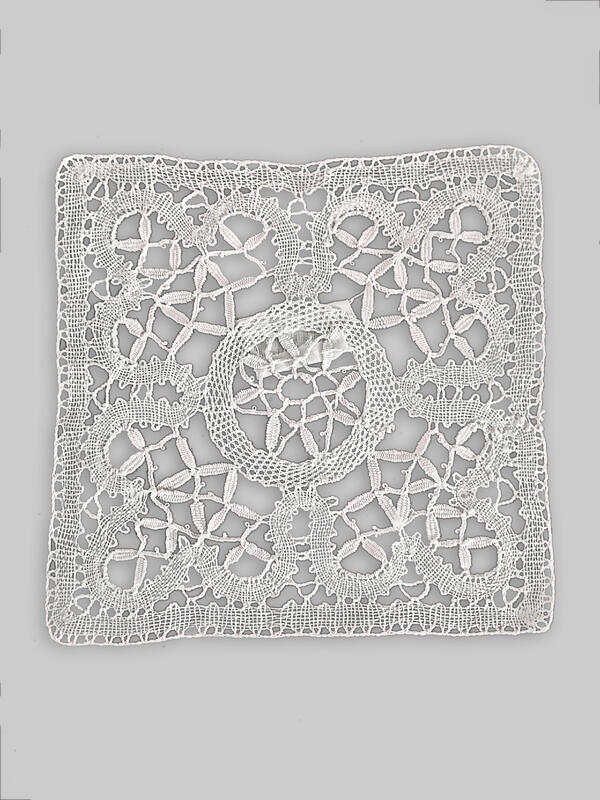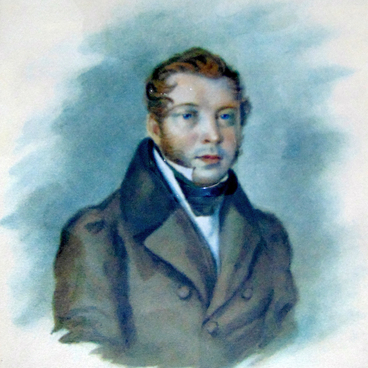The large sitting room museum Aksakov family exhibition displays several pieces of elegant Thonet style furniture. It also has an oval table located near the sofa and covered with a burgundy velvet tablecloth. It is easy to imagine a china set and a samovar on this table: it was indeed often used for tea drinking. On his burgundy tablecloth, a white square cotton napkin immediately stands out, tied on bobbins, wooden spools on which special threads were wound for weaving lace.
This napkin is exclusively decorative. It is not the only bobbin-lace piece in the large sitting room: the miniature table stand is covered with a lace tablecloth. Lace has attracted attention at all times thanks to its openwork intertwining patterns. Although the process of its creation is associated with many difficulties, there have always been craftswomen who completely devoted themselves to filigree work with lace.
Lace is believed to have originated in Italy and Spain. In the Middle Ages, due to the rapid development of trade, this technology penetrated into Russia, where it absorbed the features of the national culture, becoming unique and distinctive. Legend has it that lace spread in the Russian Empire thanks to Peter I: allegedly it was he who brought several lacemakers from Holland, who taught Russian women their craft.
One of the most common methods for creating lace is bobbin braiding. Most often, bobbins are made of hard wood species with a smooth structure: such products do not leave splinters. Dozens of bobbins can be used to make one lace: they are chosen individually, depending on what the result should be. Therefore, the length of the bobbins varies from 10 to 100 mm.
Most often, you will see plant motifs in Russian lace: trees, flowers, berries characteristic of the native lands of the creator of lace. Often among the ornaments of Russian lace one could find a pattern in the form of oak leaves. In Slavic folklore, oak is the most фrevered tree. The spikelet-shaped pattern was also often repeated: it was believed that such a pattern helps to attract wealth and prosperity. Popular belief was that the pattern in the form of an ear, like that of an oak leaf, also protected from wickedness and evil spirits.
This napkin is exclusively decorative. It is not the only bobbin-lace piece in the large sitting room: the miniature table stand is covered with a lace tablecloth. Lace has attracted attention at all times thanks to its openwork intertwining patterns. Although the process of its creation is associated with many difficulties, there have always been craftswomen who completely devoted themselves to filigree work with lace.
Lace is believed to have originated in Italy and Spain. In the Middle Ages, due to the rapid development of trade, this technology penetrated into Russia, where it absorbed the features of the national culture, becoming unique and distinctive. Legend has it that lace spread in the Russian Empire thanks to Peter I: allegedly it was he who brought several lacemakers from Holland, who taught Russian women their craft.
One of the most common methods for creating lace is bobbin braiding. Most often, bobbins are made of hard wood species with a smooth structure: such products do not leave splinters. Dozens of bobbins can be used to make one lace: they are chosen individually, depending on what the result should be. Therefore, the length of the bobbins varies from 10 to 100 mm.
Most often, you will see plant motifs in Russian lace: trees, flowers, berries characteristic of the native lands of the creator of lace. Often among the ornaments of Russian lace one could find a pattern in the form of oak leaves. In Slavic folklore, oak is the most фrevered tree. The spikelet-shaped pattern was also often repeated: it was believed that such a pattern helps to attract wealth and prosperity. Popular belief was that the pattern in the form of an ear, like that of an oak leaf, also protected from wickedness and evil spirits.



